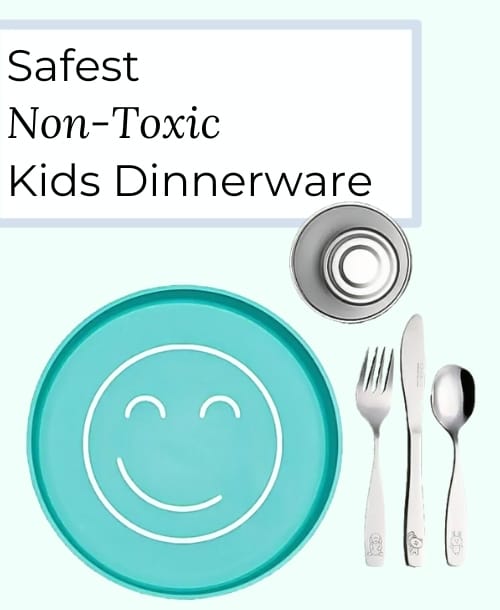
Choosing safe, non-toxic kids’ plates and tableware is crucial to ensure the safety and well-being of your little ones.
With all the talk about chemicals, getting dishware made from safe, long-lasting, and eco-friendly materials is more important than ever.
This guide will do two key things:
- Show you the hidden dangers of typical kids’ plates, including the risks of plastic, lead, PFAS, and melamine.
- Help you sort through the different materials to find the safest options for your kids, like stainless steel, silicone, plant-based plates, and even wood!
Here, we focus on dinnerware that is safe, tough enough to last, good for the environment, and easy to clean up. This way, you can make informed choices for your family’s health and the planet.
Let’s explore the best and safest toddler dinnerware out there, so your child’s meals are safe, fun, and free of harmful chemicals.
Ready? Let’s dive in!
Medically-reviewed by Dr. Ahmad Alsayes, MBBS
Risks of Plastic Dinnerware for Kids: More than Just BPA
Plastic plates might seem handy, but there’s a dark side to consider, especially for kids.
BPA Blues: This chemical hardens plastic, but it can leak into food, especially when heated, exposed to sunlight, or used with acidic foods. Recent studies have linked BPA to things like hyperactivity and ADHD, heart disease, and possible association with precocious puberty in adolescents.
“BPA-free” plastic isn’t free from risk, either. It usually contains alternatives like BPS, which raise similar health concerns, possibly linked to diabetes, obesity, asthma, and certain cancers.
Phthalates are another concern. These chemicals make plastics flexible, but they can also leak into food and mess with a boy’s reproductive development.
The safer choice: plastic-free dinnerware. Whenever possible, skip plastic altogether.
But if you do need to use it, follow these tips:
- Avoid #3 (PCS), #6 (Polystyrene), and #7 (Miscellaneous) plastics for everyday use. These contain BPA and other nasty chemicals.
- Ditch the microwave: Heat food in glass containers like Pyrex instead.
- Avoid storing acidic foods in plastic containers to minimize potential leaching.
Other Dinnerware Risks:
Lead & Cadmium in Ceramics: These lurk in older or hand-painted ceramic dishes. They can leak into food, especially with microwaving or acidic foods. The CDC and ATSDR warn that lead and cadmium exposure can harm a child’s brain and nervous system or cause stomach, bone, and kidney problems in adults. So, be careful with vintage ceramics!
PFAS in Paper Plates: PFAS chemicals, used for non-stick pans, are sometimes applied to paper plates for grease resistance. These chemicals do not break down easily, contaminating the environment. Research also links PFAS to health issues such as decreased fertility, high blood pressure, developmental delays in children, elevated cholesterol levels and risk of obesity, increased risk of some cancers, including prostate, kidney, and testicular cancers.
Melamine – Not Great for Young Kids: Melamine plates, including bamboo plates with melamine resins, can be risky for kids. The resin contains formaldehyde, which can leak into hot or acidic food (like tomato sauce), although in small amounts. This is why experts advise against microwaving melamine plates, especially for young children. Plus, melamine is bad for the environment, just like plastic.
Criteria for Truly Non-Toxic Kids Dinnerware: What to Look For
Not all plastic-free plates are created equal. Here’s what to consider when choosing non-toxic kids dishes, cups, and any other feeding utensils:
- Safety and Non-Toxicity: Opt for non-plastic kids’ plates free from BPA, phthalates, melamine, lead, cadmium, and PFAS. The dinnerware should not leach any chemicals when heated or in contact with food.
- Durability: Young kids can be rough on things! Look for strong plates that won’t shatter easily. Glass and ceramic might be safe, but they can break easily.
- Sustainability: Choose dinnerware made from materials that are good for the environment. Stainless steel is highly recyclable, while wood and plant-based options biodegrade.
- Ease of Cleaning: Ideally, your tableware should be dishwasher safe, easy to clean, and resist stains, odors, and bacteria. Silicone and stainless steel are generally easier to clean than plastic, wood, or plant-based materials.
Other things to consider will depend on your family’s needs, like how soft the material is and whether you want divided plates. We’ll cover those in the buying considerations section.
Here are the top 3 materials that hit the mark on safety, durability, and more:
Safest Dinnerware Materials for Kids & Toddlers: Pros & Cons
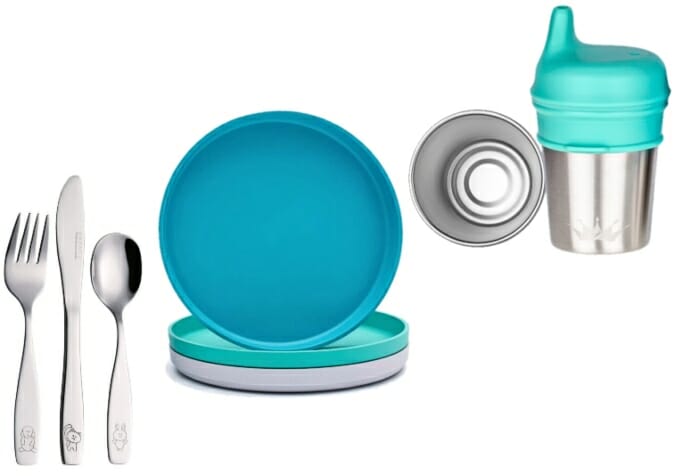
Stainless Steel:
Pros:
- Durable: Virtually unbreakable and resistant to dents and scratches.
- Easy to clean: Dishwasher-safe for hassle-free cleaning.
- Hygienic: Resists corrosion, stains, and odors, promoting hygiene.
- Eco-friendly: Made from recyclable materials, minimizing environmental impact.
- Long-lasting: Can last for years with proper care, reducing waste over time.
Cons:
- Not microwave-safe: Metal can spark and cause damage during microwaving.
- Potential for nickel and chromium leaching: While generally safe, consult a doctor if your child has allergies.
- Cold to the touch: May feel initially cold compared to other materials.
Food-Grade Silicone:
Pros:
- Safe: Non-toxic and chemically stable, doesn’t leach chemicals when heated.
- Flexible: Soft and bendable, reducing the risk of injury if dropped or thrown.
- Versatile: Oven, microwave, dishwasher, and freezer safe.
- Easy to clean: Smooth surface allows for easy cleaning.
- Durable: Can last a long time with proper care.
- Variety of designs: Available in various fun and colorful designs.
Cons:
- Can bend: Its flexibility may not be suitable for all uses.
- May absorb odor: Can temporarily absorb the smell of strong-smelling foods.
- Not as heat resistant as other materials: May not withstand extremely high temperatures.
Plant-Based Composite:
Pros:
- Natural, non-toxic, and antimicrobial: A healthy choice for your child.
- Lightweight and durable: Easy for kids to handle, yet resistant to breakage.
- Eco-friendly and biodegradable: Breaks down quickly and helps reduce waste.
- Rapidly renewable resources: Grass-like plants such as corn and bamboo replenish quickly.
Cons:
- Hand wash only: Not suitable for the dishwasher due to heat sensitivity.
- Prone to cracking: From drops or high heat exposure.
- May contain melamine binders or lead-based pigments: Always choose melamine-free and lead-free options, like those below.
Natural Wood:
Pros:
- Sustainable: Made from renewable resources like bamboo or birch, requiring less energy and resources than plastic.
- Biodegradable: Wood is compostable, helping to reduce landfill waste.
- Natural antibacterial properties: May harbor fewer bacteria than plastic.
- Safe for health: No harmful emissions or leaching chemicals.
- Durable: Can last a long time with proper care.
Cons:
- Not microwave-safe: Moisture inside the wood can swell and cause cracking/ warping.
- Not dishwasher-safe: Demands hand washing with mild soap and cool water, avoiding soaking. Dry right away.
- Can stain and absorb odors: Demands occasional oiling to maintain appearance.
- Higher upfront cost: May be initially more expensive than plastic.
Top Non-Toxic Kids Plates & Dinnerware Picks
To make the following picks, I applied my experience of materials from sourcing and designing these exact types of products. I’ve tested most of these options during product R&D or sourced samples from the same factories to assess quality.
Our team also consulted with parents who are long-term users of the following options.
Each pick below is highly rated, trusted, and 100% plastic and melamine-free.
Best Non-Toxic Toddler Plates
1. Weesprout
WeeSprout began in 2015 with a mission to create safe and affordable eco-friendly dishware for kids. They focus on high-quality, plastic-free materials free from BPA, PVC, and phthalates.
WeeSprout excels in producing safe plates for toddlers, like their popular silicone options. They’re perfectly sized for small hands, and the divided sections are a lifesaver for picky eaters and promote portion control.
With flat-bottomed designs, they offer a happy medium between suction plates and grown-up dinnerware. The grippy silicone helps prevent accidental shoves. Temperature resistant for hot or cold meals, these plates come in various fun colors to brighten up mealtimes.
Pros:
- 100% food-grade, FDA-approved silicone; 3rd-party tested.
- Durable and flexible: Designed to withstand bending and dropping without breaking.
- Easy to Clean: Dishwasher-safe and easy to hand wash; doesn’t stain from foods like spaghetti and meatballs.
- Versatile: Microwave and oven-safe with lid options available for storing leftovers.
- Great for portion control and fussy eaters: The sizing and division of the plates shine for picky eaters or toddlers with specific dietary needs.
- Responsive customer service
Cons:
- Plates may retain a soap taste or smell despite thorough washing. To rid this scent, boil the silicone plate for 15 minutes.
- The flexibility of the plates can cause spilling if you’re not careful, making these risky for very young children.
- Some of their items can be too small for older children.
- The lid options aren’t 100% leak-proof: Not secure enough for travel; better suited for storing leftovers in the fridge.
Top WeeSprout Picks:
2. HaWare
HaWare is a rising star in the dinnerware game, specializing in high-quality stainless steel plates. Their rugged, unbreakable plates are perfect for little ones who like to test the durability of their dinnerware.
I use their 8″ plates for camping, as they’re lightweight and can handle anything the wilderness brings. For children, they’re easy to hold, perfect for daily use (indoors or outdoors), and withstand drops all day.
Made entirely from 304-grade stainless steel, these plates will last and excel at resisting rust. All options are dishwasher-safe for cleaning ease.
Pros:
- 100% 18/8 stainless steel construction avoids the health risks associated with plastic
- Highly durable and resist bending, denting, or cracking, making them ideal for toddlers and pets.
- Dishwasher-safe for easy cleaning; matte polished to prevent fingerprints.
- Versatile usage beyond children’s meals, like pet feeding and camping, with a design that prevents breakage.
- Child-friendly: Proper size to fit children’s hands and smooth round edges to avoid cuts.
Cons:
- Plates tend to spin on bare table surfaces, which can be challenging for toddlers learning to use utensils. To prevent this, put a mat under the dish.
- Lack of divided sections in plates may not appeal to everyone.
- Some problems with corrosion and rust over time. I haven’t had this issue, but others have.
- Not microwave-safe.
Top HaWare Picks:
3. Bumkins
Bumkins, a brand founded by a mom in 1989, knows a thing or two about creating safe and convenient mealtime solutions for kids.
Their claim to fame? Silicone suction plates that are both eco-friendly and effective. Made from 100% food-safe, platinum-grade silicone, Bumkins plates exceed U.S. safety standards.
As a product tester, I’ve reviewed several suction plates, and Bumkins consistently stands out. Their suction design is simply more effective than others at keeping bowls and plates in place, reducing spills.
Dishwasher-safe and temperature-resistant, Bumkins plates can handle anything from a cool yogurt parfait to a hot dinner. They’re oven-safe up to 400°F, making them even more versatile.
Pros:
- 100% Platinum silicone (3rd party tested; FDA & CPSIA-certified). BPA-free, PVC-free, and phthalate-free.
- Strong suction prevents plates from sliding around, enhancing stability during meals.
- Easy to clean by hand or the dishwasher and resistant to staining from various foods.
- Durable and long-lasting, maintaining quality even with frequent use and washing.
- Divided sections help with portion control and keeping foods separate, supporting independent toddler eating.
Cons:
- Can retain a soapy taste after washing, affecting the taste of food served on them. (This happens with silicone, but boiling the dish for 15 minutes works.)
- Sometimes, the plates don’t stick well to certain surfaces like high chair trays or textured wooden tables.
- Durability concerns with the dividers in the dish (some users I spoke with reported cracks in the dividers over time).
Top Bumkin Picks:
4. EZPZ
Frustrated with messy mealtimes with her triplets, Lindsey Laurain developed the Happy Mat in 2014. It set the standard for an all-in-one placemat and suction plate.
But she didn’t stop there. Frustrated by the lack of innovation and safety standards in feeding products, she joined forces with Dawn Winkelmann, a pediatric feeding specialist. Together, they’ve transformed EZPZ. Today, the brand offers a complete line of silicone tableware for every feeding stage, from pre-feeding tools to plates for preschoolers.
Safety is EZPZ’s top priority. All their products are 3rd-party tested for safety and 100% free from plastics, BPA, BPS, latex, lead, and phthalates.
Pros:
- 100% food-grade silicone (3rd party tested; FDA & CPSIA-certified).
- Strong grip adheres well to high chair trays and other surfaces, reducing mess.
- Divided compartments are ideal for portion control and keeping foods separated.
- Easy to clean and maintain (dishwasher-safe), with a fun design that’s functional and attractive for children.
- Microwave and oven-safe (up to 350℉).
Cons:
- Too large for some high chair trays (like Stokke).
- Grip varies, with some children able to shift the mat easily on certain surfaces.
- Smaller portions than expected may be unsuitable for older toddlers or those with larger appetites.
- Silicone can absorb soap taste, affecting food flavor and potentially deterring eating. Remember, a 15-minute boil works here.
Top EZPZ Picks:
5. KS&E Korean
Looking for a durable and divided plate option? KS&E is among the only South Korean manufacturers of high-quality stainless steel plates.
They offer various divided options, from three compartments to six, in both round and rectangular shapes. This makes them perfect for picky eaters who like their food separated or parents who want to promote portion control.
Made from 100% 18/10 stainless steel, they offer superior rust and corrosion resistance compared to the more common 18/8 (304-grade). These guys will never rust and can withstand even the most enthusiastic throws (accidents happen!).
They’re a versatile choice, whether used as non-toxic plates for toddlers, children on highchairs, or dieting adults.
Pros:
- 100% 18/10 stainless steel construction for safety and ultimate corrosion resistance. FDA and CPSC-certified through 3rd-party testing.
- Unbreakable and stackable for easy storage.
- Easy to clean, either by hand or in the dishwasher, without retaining soap or food odors.
- Lightweight and designed without sharp edges, making them safe and convenient for toddler use.
Cons:
- Plates can be difficult to separate when stacked together tightly.
- Some manufacturing issues, like not being level on flat surfaces.
- Compartments are too shallow for adult-sized portions.
- Not microwave-safe.
Top KS&E Picks:
6. Ayiaren Solid Wood
Looking for an all-natural alternative? Ayiaren handcrafts solid wood dishes from sustainably sourced Acacia. They carve each plate from a single piece of wood, free from glues and harmful finishes, prioritizing safety and durability.
Ayiaren offers a range of sizes, from 6” to 12” plates, catering to toddlers just starting solids up to adults. Each plate has a unique wood grain, making it a one-of-a-kind piece. Plus, wood is naturally warm to the touch, creating a more pleasant dining experience than cold steel plates.
With Ayiaren’s focus on safety and natural materials, they’re an excellent choice for families who want both child and planet-friendly dishware.
Pros:
- Solid, unglued Acacia wood – zero synthetic chemicals.
- Sturdy and thick construction makes them durable and suitable for various uses beyond just dining, such as candle plates.
- Attractive, earthy design.
- Easy to wipe clean, with a smooth finish that’s practical for everyday use.
Cons:
- Color and grain may not match the product images due to varying wood sources (some can appear much darker than others).
- Plates can develop mold, particularly if not dried thoroughly after washing.
- The wood can show wear similar to cutting boards in a relatively short time if you cut directly on the dish.
- Not dishwasher-safe.
Top Ayiaren Picks:
7. Bobo & Boo Plant-Based
Driven by a desire for safe and stylish dinnerware for her children, Australian mom Naomi founded Bobo & Boo. Their plant-based dishes are all about keeping things healthy and eco-friendly without sacrificing functionality or fun.
Bobo & Boo prioritizes safety. Their plant-based options are free from plastic, BPA, PVC, melamine, and phthalates, offering peace of mind. Instead, they use a unique plant-based resin derived from corn and sweet potatoes, making them a healthy and sustainable choice.
Just note that Bobo & Boo’s bamboo dinnerware does contain melamine. Only their plant-based options (mentioned here) are melamine-free.
Pros:
- Eco-friendly and safe, made from plant-based materials. Melamine free.
- Microwave and dishwasher-safe, offering convenience in use and cleaning.
- Designed with practical features, such as raised ridges and edges, to prevent spills and facilitate easy scooping.
- Uses all-natural, mineral-based pigments for the vibrant coloring. Lead-free and food-safe.
Cons:
- Prone to cracking from excess dishwasher use, so try to hand wash whenever you can and stick to the top rack only.
- Can crack from table-height drops, challenging the value for the price. Silicone and steel are better suited for throwers.
- Some users reported color inconsistencies through my discussions, which can affect the sets’ uniformity.
Top Bobo & Boo Picks:
Best Non-Toxic Kids Cups
8. Chillout Life Stainless Steel Cups
Chillout Life, founded in 2016, offers a wide selection of high-quality, stainless steel drinkware for kids and adults.
Their children’s cups are some of the best on the market. They’re made from 18/8 stainless steel with smooth-rolled rims and electropolished interiors for safety. They’re also more affordable and higher rated than similar options.
Lastly, Chillout Life stands behind its products with a lifetime warranty. Strong warranties like this are a key quality indicator and offer peace of mind that your choice will endure the trials of childhood.
Pros:
- 100% 18/8 stainless steel with an electropolished interior. Free from plastic and BPA linings.
- Highly durable and resistant to breaking when dropped, making them ideal for children.
- Doesn’t fade or rust, maintaining appearance and usability over time.
- Dishwasher-safe for easy cleanup, with no absorption of soap smells.
Cons:
- Prone to getting stuck together when stacked, making them difficult to separate.
- The 8oz cups are smaller than you think; they might be inadequate for older kids (their 12oz set is a better option).
- Can sometimes leave a metallic taste in acidic beverages like fruit juice.
Top Chillout Life Picks:
Top Non-Toxic Kids Cutlery Pick
9. Elk and Friends
Elk and Friends prioritizes safety and practicality for parents. They offer a line of children’s dinnerware made from high-quality, toxin-free materials like glass and stainless steel.
Their cups and containers are incredibly versatile, easily adapting to your child’s needs. They can store purees for babies one day and hold spill-proof smoothies for toddlers the next. Their kid’s silverware, made from silicone and stainless steel, is among the best quality I’ve found.
Elk and Friends independently tests their products to ensure they meet (or surpass) FDA standards.
Pros:
- 18/8 stainless steel and food-grade silicone construction (3rd-party tested; FDA-certified).
- Soft grip and big handle make it easy for kids to hold, scoop, and control.
- Durable materials that withstand frequent dishwasher use without rusting, tarnishing, or losing their shine.
- Designed to make mealtimes safer for toddlers. Silicone handles provide a slip-resistant grip; rounded fork tips prevent injury.
- Eye-catching designs and colors that appeal to children, with smart details like elevated heart designs for added grip.
Cons:
- The removable silicone handles can trap water or food, potentially leading to mold growth. Be sure to remove them for thorough cleaning.
- Some manufacturing defects were noted upon user discussions. These included rough finishes and sharp edges. So, inspecting your set upon arrival is ideal.
- Quality control issues, including incorrect product assortments and missing items in sets.
Recommended Elk and Friends Picks:
Buying Considerations: Choosing the Right Option for your Family
Choosing non-toxic kids’ plates, bowls, and utensils demands balancing safety, practicality, and your family’s preferences. Here’s a guide to help you decide.
Safety First:
- Healthy Materials: Look for dinnerware free of BPA, PVC, phthalates, and lead. Opt for safe materials like silicone, stainless steel, solid wood, or plant-based composites (melamine-free).
Eco-Conscious Choices:
- Sustainable Materials: Consider the material’s environmental impact. Stainless steel and some plant-based options are recyclable or biodegradable. Silicone is recyclable, but few places can process it.
Functionality and Design:
- Divided Plates or Standard? Consider your child’s eating habits. Divided plates can help prevent food mixing, while some children prefer standard plates. Some children are more likely to try new foods when they’re not touching.
- Easy Cleaning: Choose dishwasher-safe options for convenience. Wood plates demand occasional oiling to prevent cracking.
- Durability is Key: Opt for shatterproof and long-lasting materials like stainless steel or high-quality silicone to minimize replacements.
- Heating Versatility: If reheating food on the plate is essential, ensure the material is microwave and oven-safe (silicone is often a good choice). Stainless steel plates are oven-safe only.
- Fun Factor: Appealing colors and shapes can make mealtime more enjoyable for kids.
Additional Considerations:
- Size and Portability: If you’re a family on the go, consider compact and lightweight options.
- Cost vs. Value: Non-toxic plates may have a higher upfront cost, but consider the long-term value of safety and durability.
- Brand Research: Look for brands committed to non-toxic materials and sustainability, like those above. Exploring customer reviews can offer insights into real-world use.
By considering these factors, you can choose dinnerware that prioritizes your child’s health, mealtime ease, and your family’s environmental values.
Finding Safe Dinnerware: A Quick Guide
Here are some tips to quickly assess the safety and quality of dinnerware, particularly for stainless steel and bamboo.
Between making mistakes (using the wrong stainless steel) and deep product research, I developed these tips from my early days of product sourcing.
Choosing the Safest Stainless Steel:
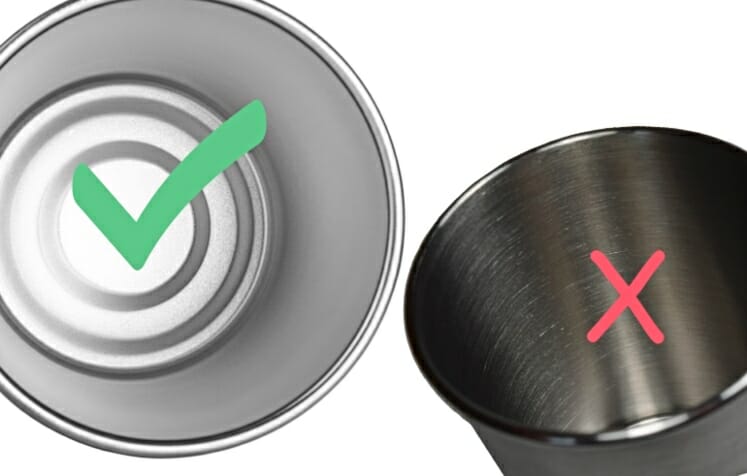
- Look for 300-series stainless steel (304, 316, 18/8, 18/10): These grades are generally safe and rust-resistant. Avoid 201-grade stainless steel, which can rust easily.
- Check for Rust Complaints: Reviews mentioning rust could indicate the use of 200-series steel.
- Opt for Polished Stainless Steel: Polished steel is smoother, easier to clean, and more rust-resistant. Look for terms like mirror-polished, matte-polished, or electro-polished (best).
- Refer to the above image: Notice the smooth, powder coat look of the electro-polished cup (left). Compare it to the non-electropolished cup (right). Notice the pitted surface with machining grooves (which collect rust).
Tip: Use Ctrl+F (Windows) or Command+F (Mac) to find these key phrases on product pages. Type in terms like “grade,” “304,” “18/8,” “201,” “polish,” “rust,” etc., on a product page. See what comes up.
Identifying Melamine in Bamboo Dinnerware:
- Look for “melamine-free” labels in the description.
- Don’t Rely on “BPA-Free” or “Plastic-Free” Labels: These terms don’t guarantee the absence of melamine.
- Assume Melamine is Present if not Advertised as “Melamine-Free”: Many sellers avoid clearly mentioning melamine if it’s used.
Tip: Use Ctrl+F (Windows) or Command+F (Mac) to find terms like “melamine” or “binder” on product pages. No mention of melamine likely means it’s present, as “melamine-free” is a big sales point. Keep a look out for the following wording:

Recap & Conclusion
Choosing the right non-toxic kids’ plates, cups, and utensils is more than just a mealtime decision. It’s a commitment to your child’s health and the planet.
From the risks of conventional materials like plastic and melamine to the safe havens of stainless steel, silicone, plant-based, and wood, we’ve explored the safest options for your little ones.
Remember, the ideal dinnerware should be durable, easy to clean, and free from harmful chemicals. As you choose, consider the material’s impact on both your child’s well-being and the planet’s.
P.S. Now that you’ve scored safe kids’ dinnerware, it’s time to audit yours! This dinnerware guide shows how to tell if your dinner plates are leaching lead – and what to do about it.

Hi there! I'm Adam, author and founder of TGL. Since 2016, I've produced and sold non-toxic kitchenware throughout the US. Today, I'm using my passion and experience in sustainable product manufacturing to help families avoid unsafe reusable foodware. When I'm not writing, you'll find me hiking or camping throughout Appalachia!
Related Posts

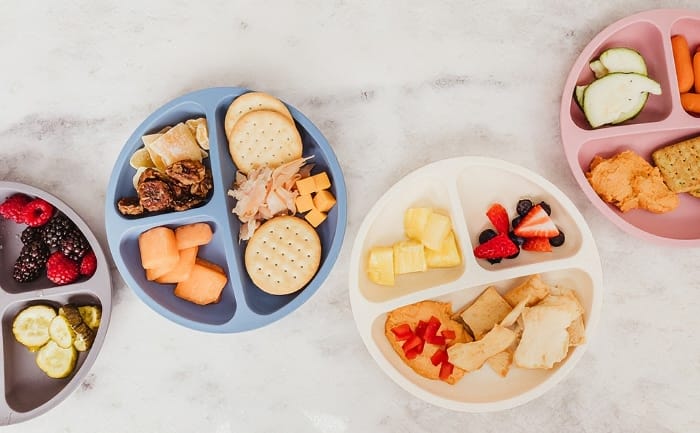

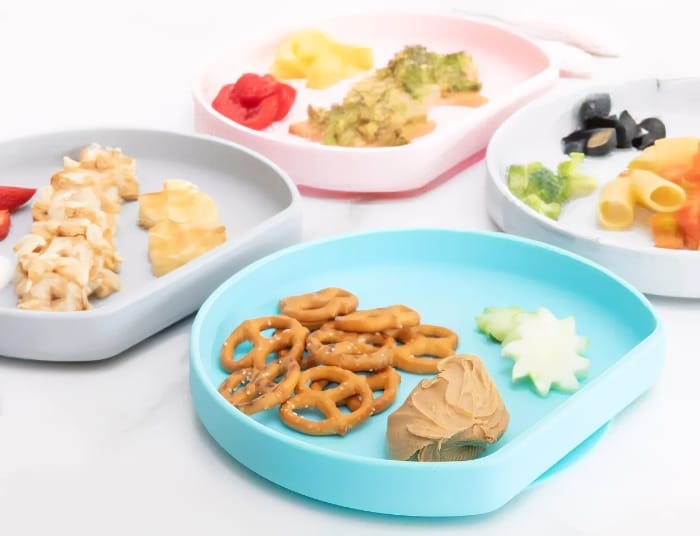
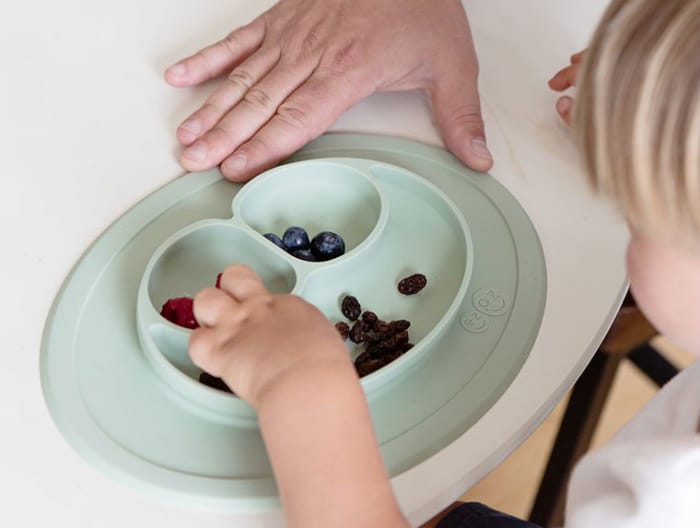
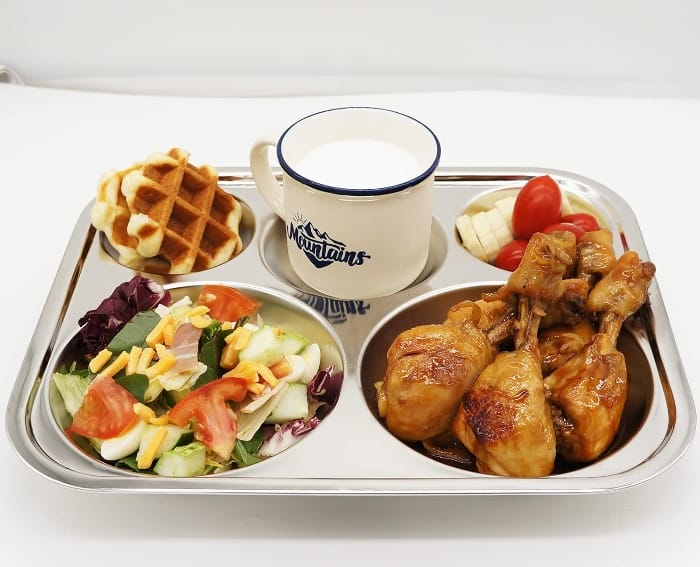
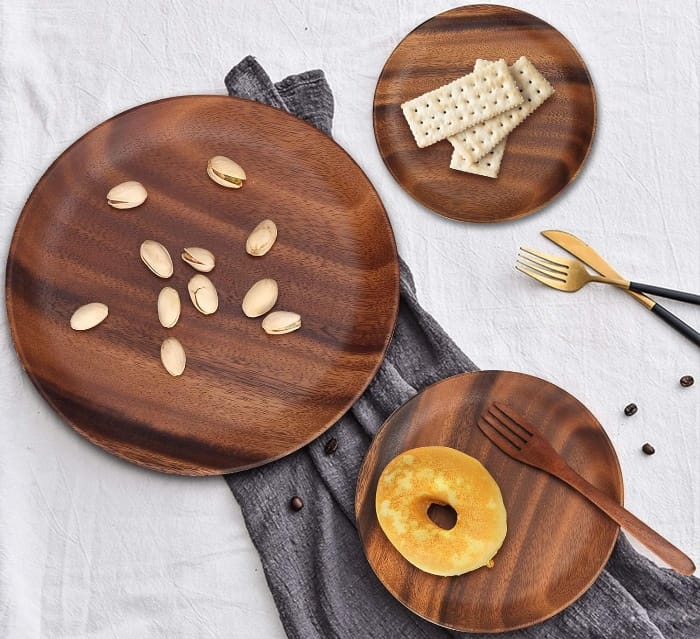
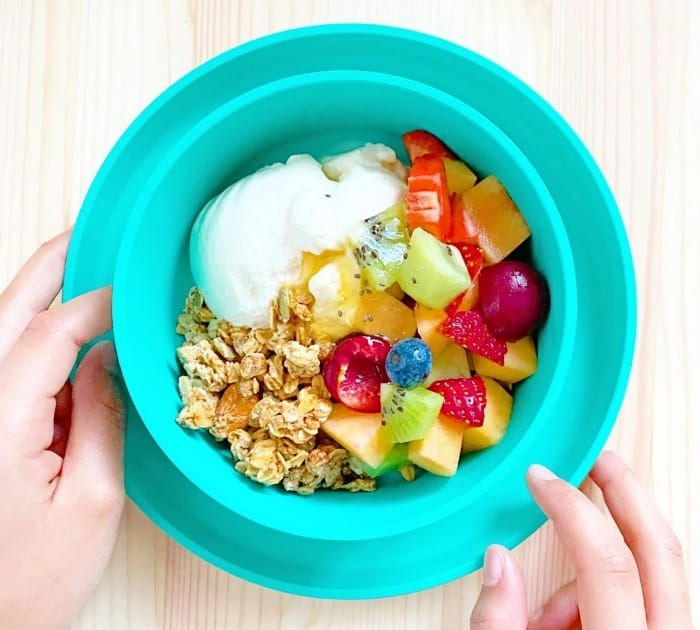
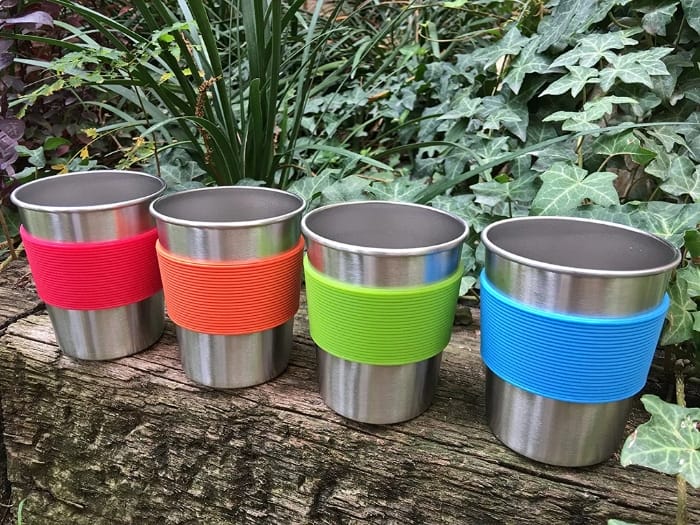
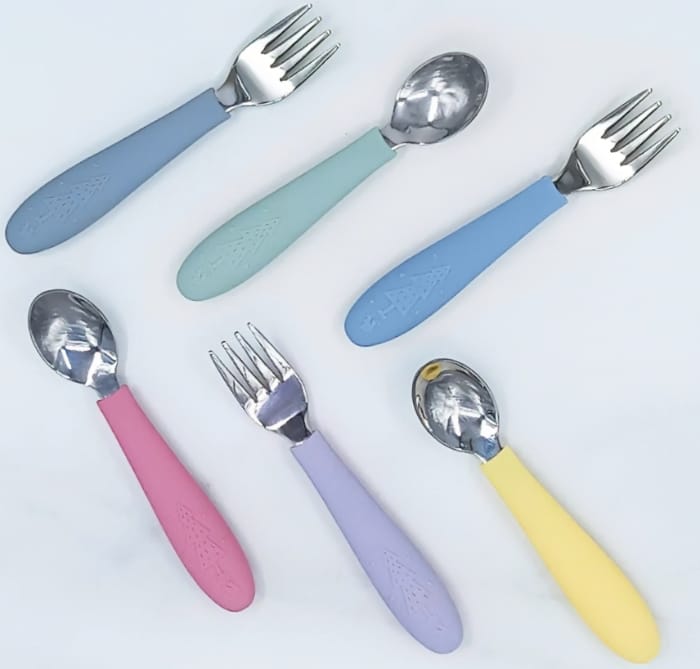
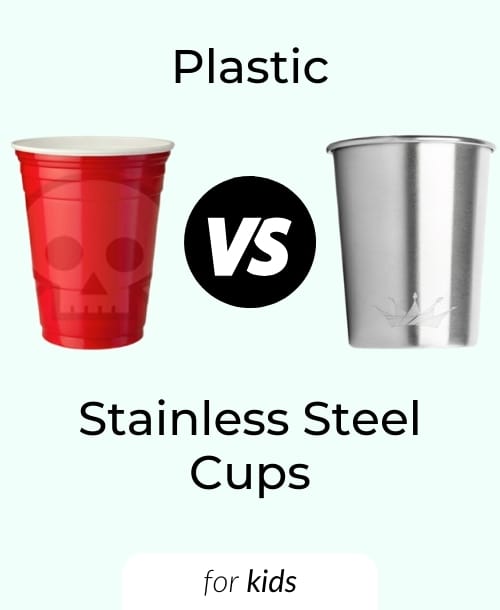
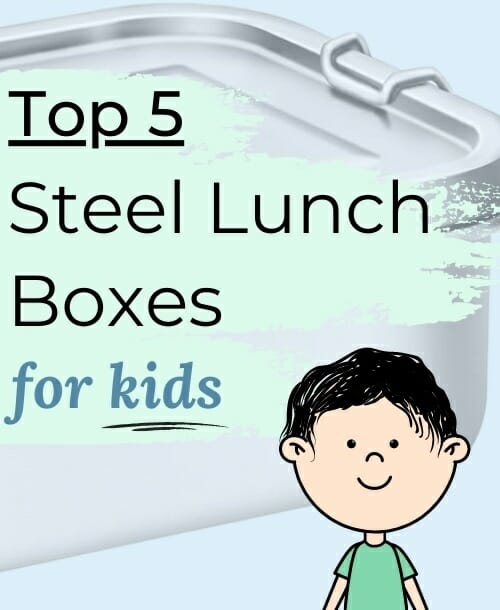
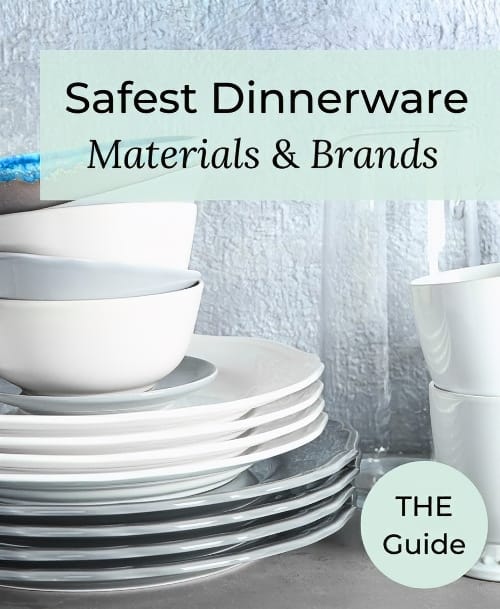
Thanks for this information. It s very helpful. What about the Corelle Livingware Winter Frost mugs? You don t mention these on your safe mugs page. Are they non-toxic as well as the dinnerware?
Hello there! I don’t see a problem with the Corelle Winter Frost Mugs, as long as they’re plain white. The non-decorated pieces are generally the safest, it’s when there are lots of bright colors and designs that you need to be careful.